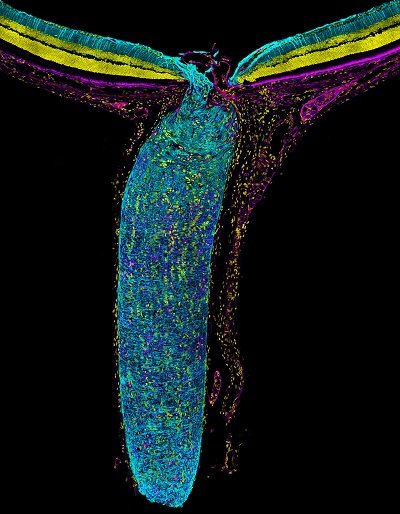
A longitudinal section of a DBA 2J mouse, a widely used mouse model of glaucoma, optic nerve head including adjacent retina. Image courtesy of Keun-Young Kim and Mark Ellisman (National Center for Microscopy and Imaging Research, San Diego).
The first report of the IRRF Initiative, Astrocytes and Glaucomatous Neurodegeneration, was published in November 2010. Since then, significant scientific progress has occurred in the field. It now is commonly accepted that astrocytes are a critical element of glaucoma pathophysiology, and new animal models have moved the field considerably. In 2014, the Initiative’s Joint Advisory Board agreed to evaluate the current state of research in the field. In March 2015, more than 40 scientists from all over the world met at the Howard Hughes Medical Institute Janelia Research Campus in Ashburn, Virginia. They identified questions, topics and experiments that should be addressed within the next five years.
The results have been summarized in five review articles published in a special issue of Experimental Eye Research (Astrocytes and Glaucoma, Volume 157, pp. 1-38, April 2017).
Glaucoma remains the second leading cause of blindness in the United States, surpassed only by severe cataracts. The need for a way to prevent glaucoma is great, and the Lasker/IRRF Initiative hopes that the two meetings it has sponsored on glaucoma move us closer to the day when this disease can be prevented.
